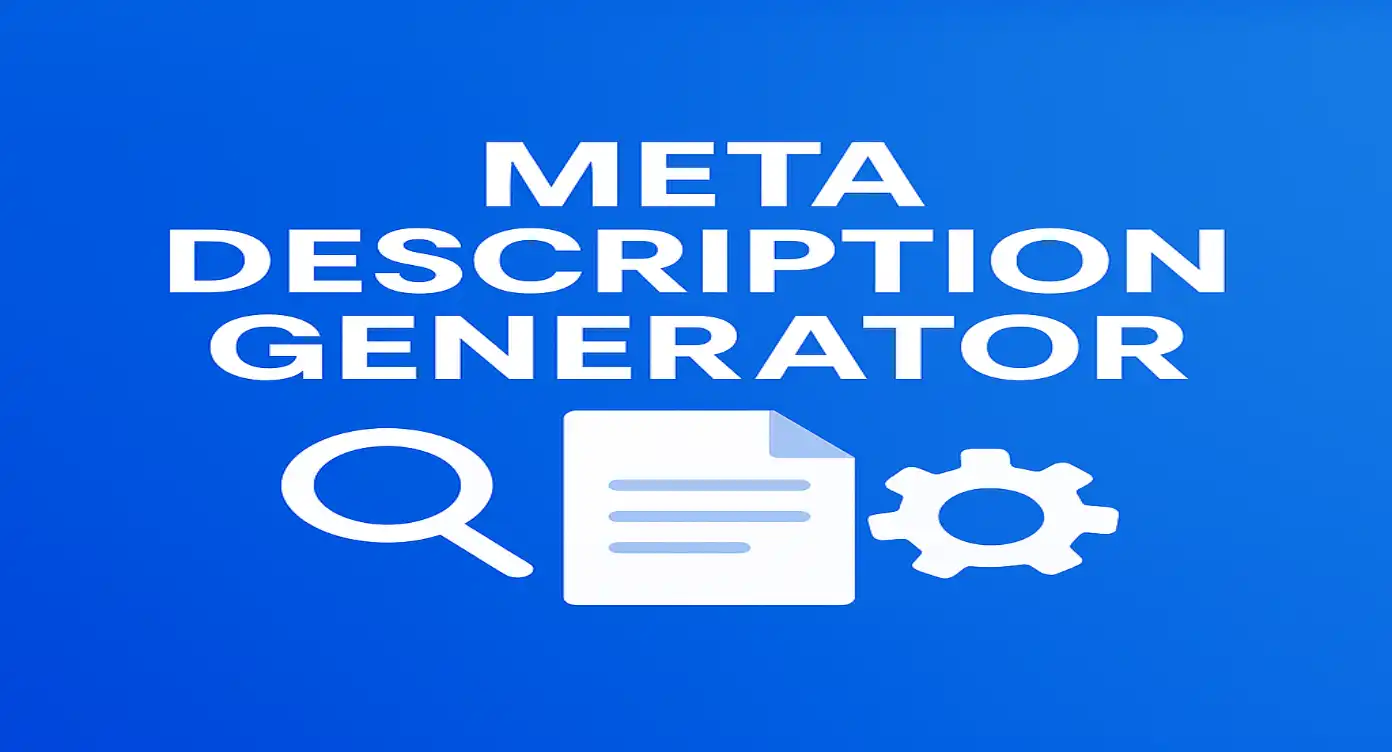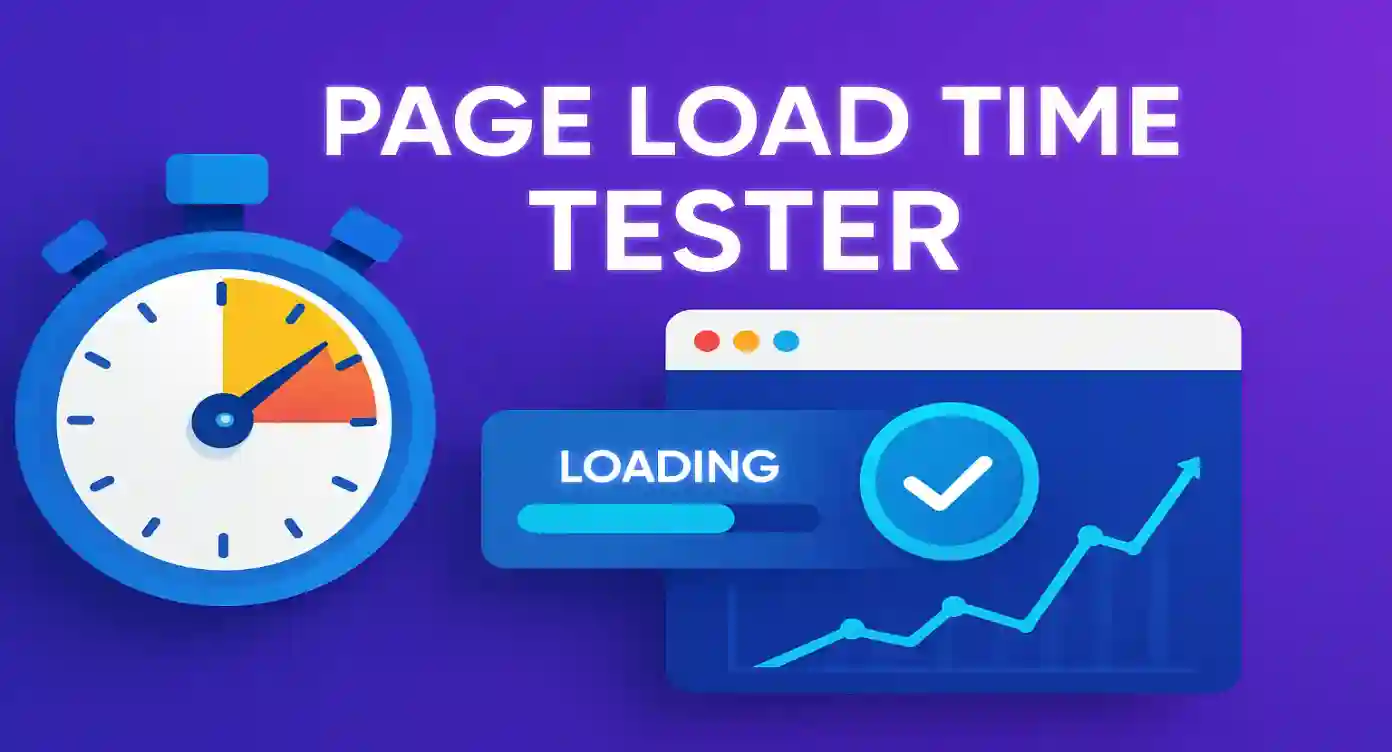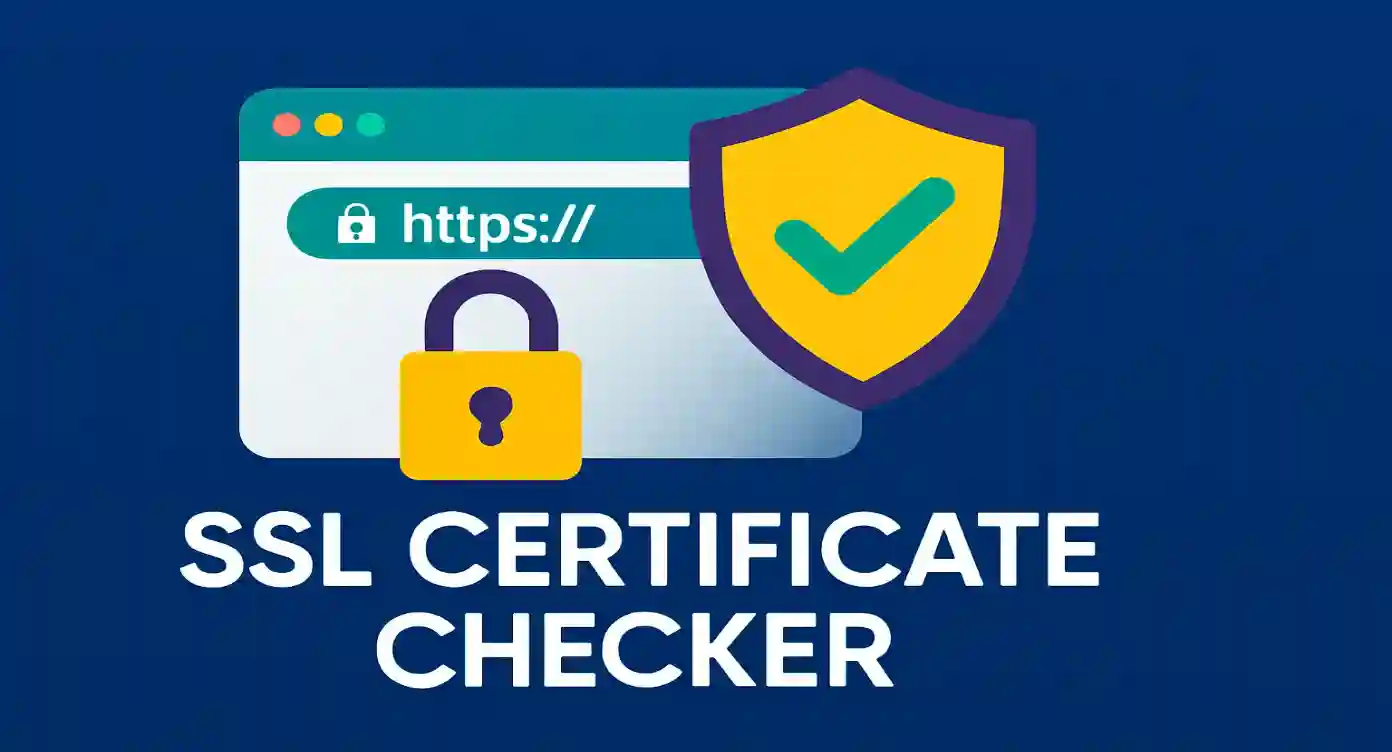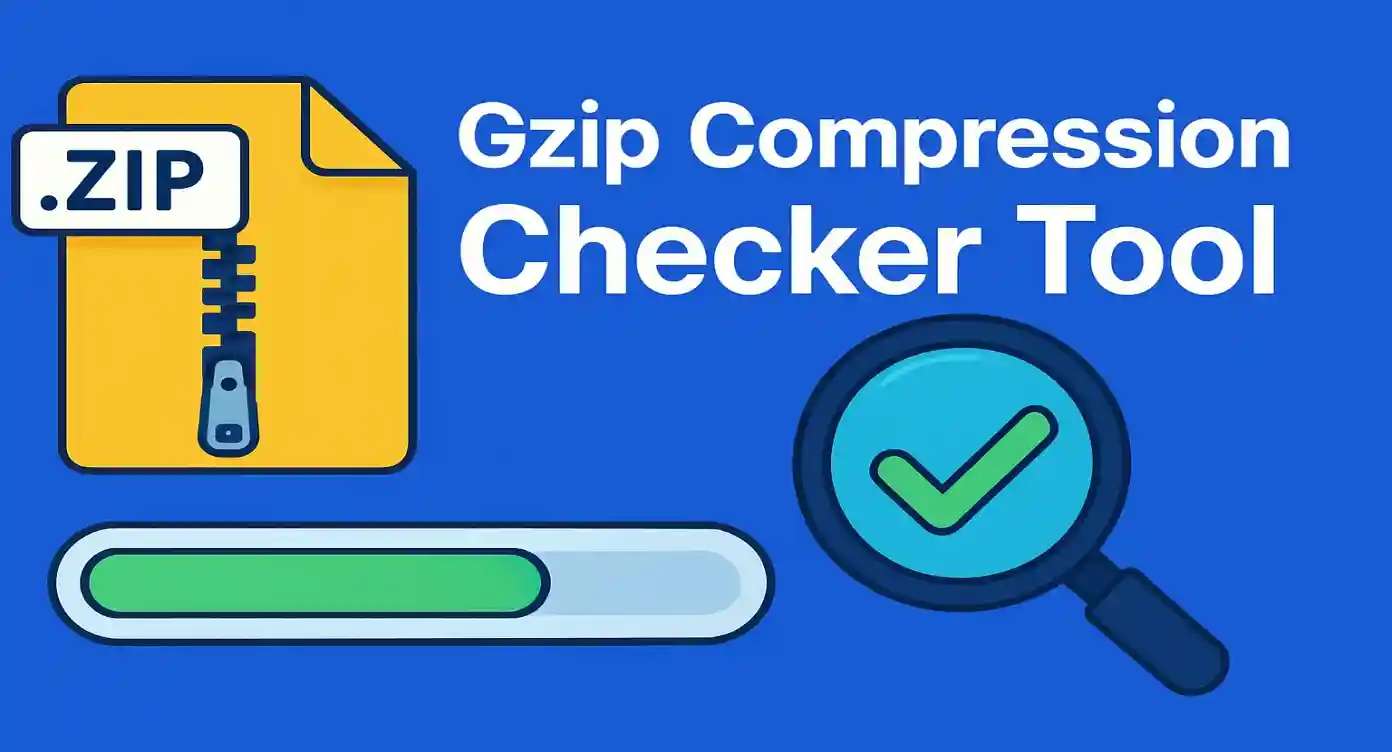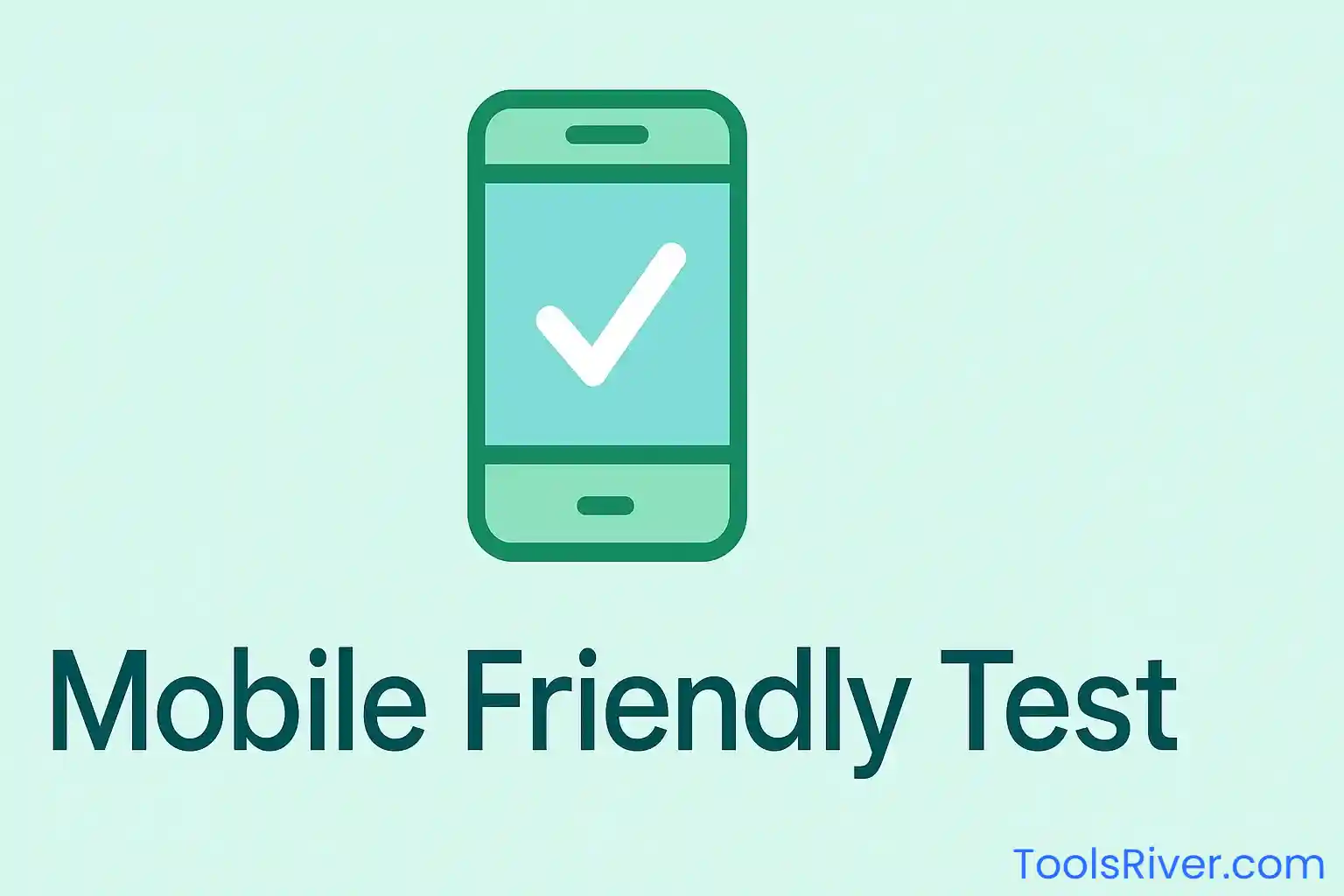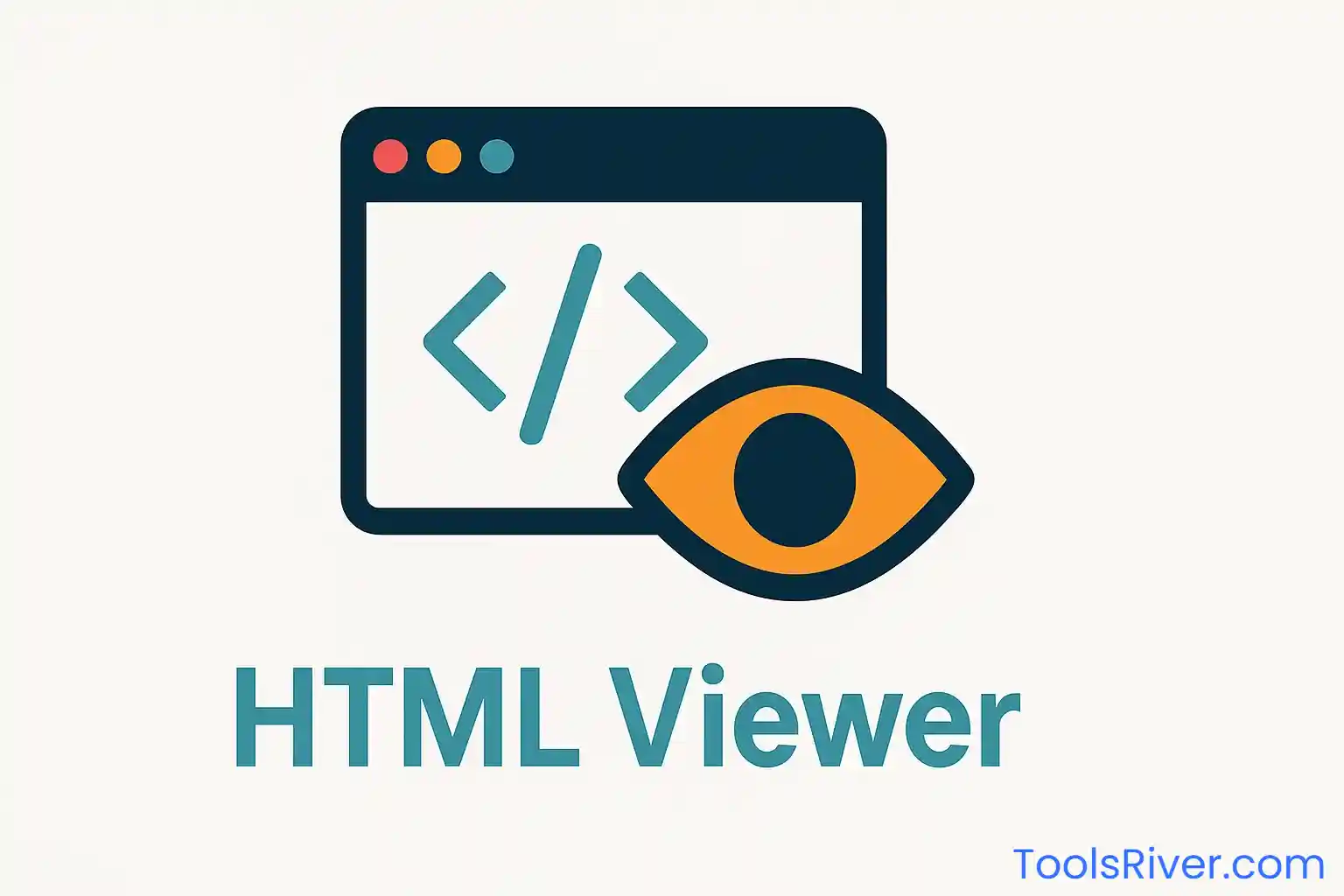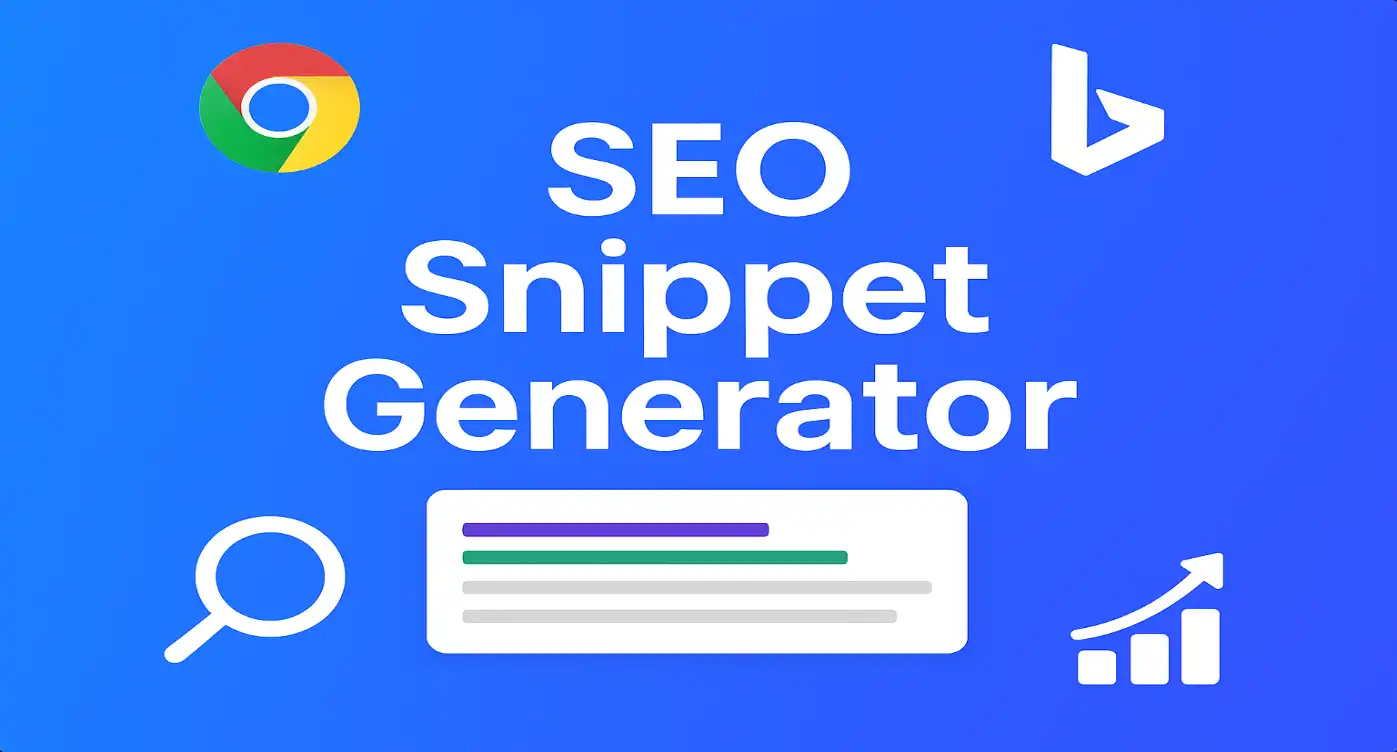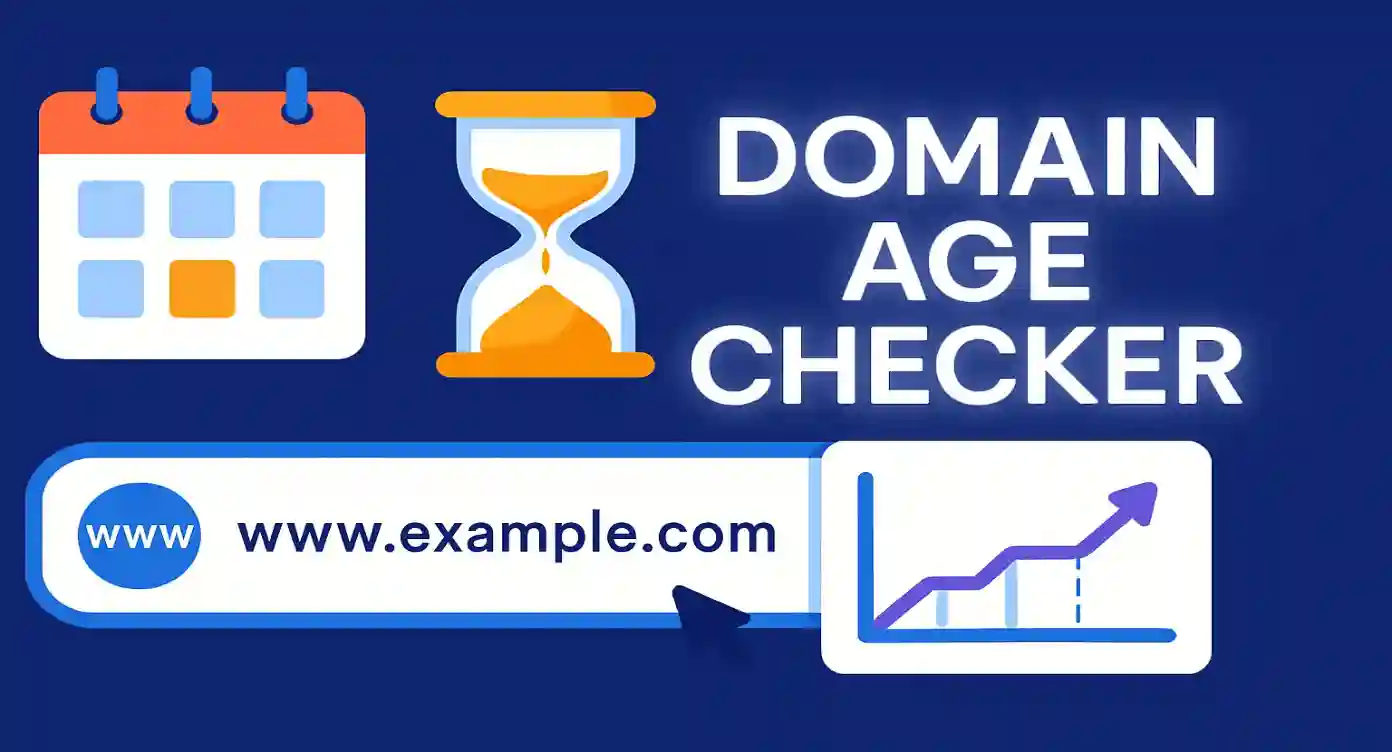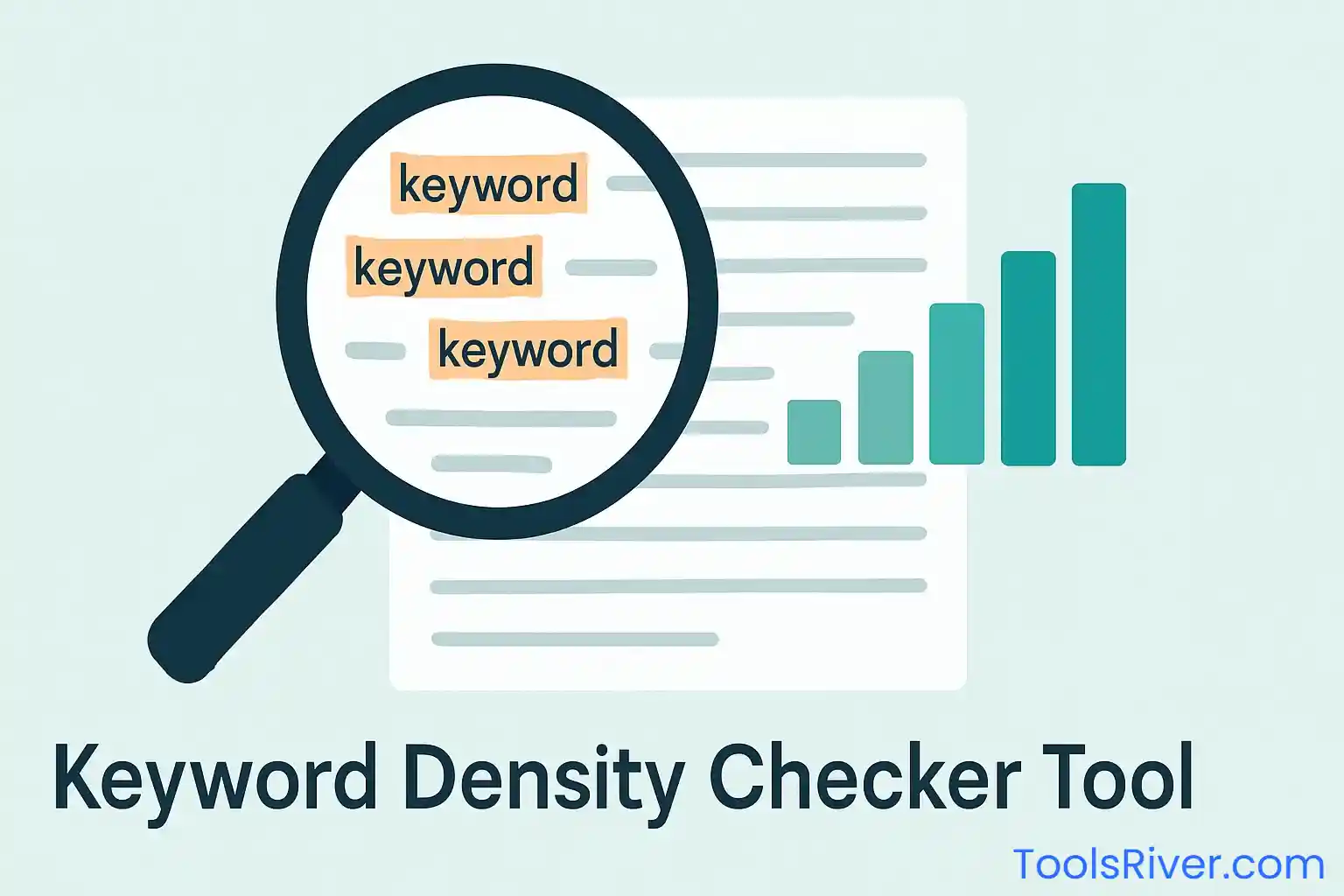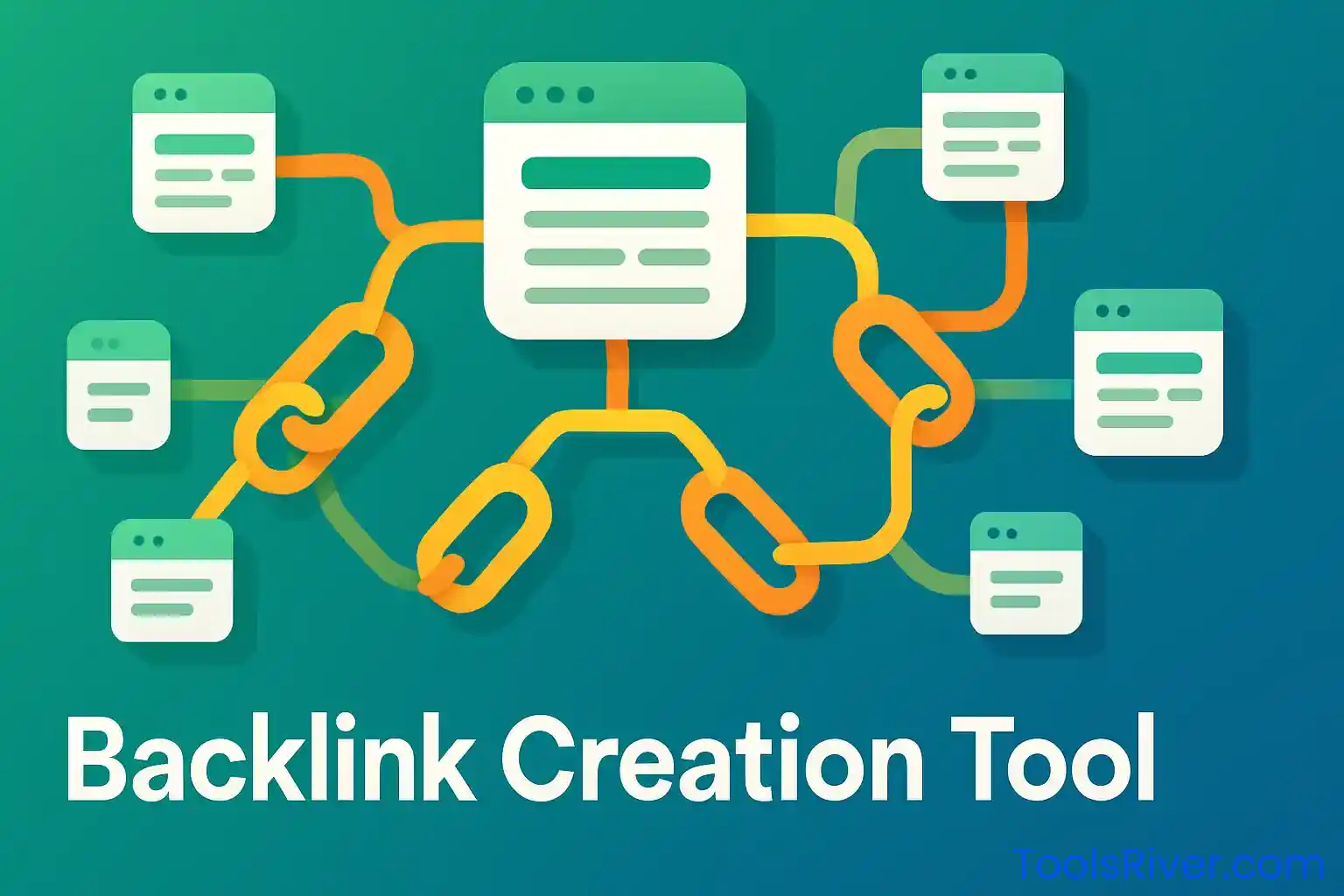SEO Meta Description Generator
Create compelling, SEO-optimized meta descriptions that boost your click-through rates and search engine rankings. Generate 5 unique descriptions instantly!
Quick Tips
- Use your primary keyword naturally in the description
- Focus on benefits and value proposition
- Include a compelling call-to-action
- Make it unique and specific to your page
- Answer user questions about your content
Generating your meta descriptions...
Your Generated Meta Descriptions
Copy any of these optimized descriptions for your webpage
Meta Description Performance Impact
Well-crafted meta descriptions can increase click-through rates by up to 30%
What is a Meta Description?
A meta description is a brief summary of a webpage's content that appears in search engine results pages (SERPs) below the page title. This HTML meta tag serves as a compelling snippet that helps users understand what your page is about before they click through to your website. Think of it as your webpage's elevator pitch – you have just 150-160 characters to convince potential visitors that your content is worth their time.
Why Meta Descriptions Matter
Improved Click-Through Rates
Compelling meta descriptions can increase your CTR by up to 30%, driving more organic traffic to your site.
Better Search Visibility
Well-crafted descriptions help search engines understand your content and display it for relevant queries.
Meta descriptions don't directly impact your search engine rankings, but they significantly influence user behavior. When users see your page in search results, the meta description is often the deciding factor in whether they click through to your site or choose a competitor's page instead. A well-written meta description acts as an advertisement for your content, highlighting the unique value proposition and benefits users will gain by visiting your page.
Enhanced User Experience
Clear, descriptive meta descriptions help users find exactly what they're looking for, improving satisfaction and reducing bounce rates.
Social Media Optimization
Meta descriptions are often used as default text when your pages are shared on social media platforms, extending their reach beyond search engines.
Competitive Advantage
Stand out from competitors with unique, compelling descriptions that clearly communicate your value proposition.
Why Use Our Meta Description Generator?
Creating the perfect meta description requires balancing multiple factors: keyword integration, character limits, compelling language, and user intent. Our AI-powered meta description generator takes the guesswork out of this process, delivering professionally crafted descriptions that are optimized for both search engines and human readers. Unlike generic generators, our tool considers your specific target audience and preferred call-to-action style to create truly personalized results.
AI-Powered Intelligence
Advanced algorithms analyze your keywords and content to generate contextually relevant descriptions that resonate with your target audience.
Multiple Variations
Get 5 unique meta descriptions for each request, giving you options to choose the one that best fits your page's tone and style.
Perfect Length
Every description is optimized to fall within the ideal 150-160 character range, ensuring full visibility in search results.
Our generator goes beyond simple keyword insertion. It analyzes the semantic relationship between your keywords and content, incorporating related terms and phrases that enhance relevance and searchability. The tool also considers user intent, crafting descriptions that directly address what searchers are looking for when they use your target keywords.
Key Features That Set Us Apart
- Character count optimization (150-160 characters)
- Target audience customization
- Call-to-action integration
- Keyword stuffing prevention
- Natural language processing
- One-click copy functionality
How Our Meta Description Generator Works
Our meta description generator employs a sophisticated multi-step process that combines artificial intelligence with SEO best practices. The system analyzes your input parameters and generates descriptions that are not only optimized for search engines but also compelling enough to drive human clicks. Here's how the magic happens behind the scenes:
Keyword Analysis & Processing
The system first analyzes your primary keyword to understand its semantic meaning, search intent, and related terms. It identifies whether the keyword is informational, navigational, or transactional, and tailors the description accordingly. The AI also considers keyword variations and synonyms to ensure natural language flow while maintaining relevance.
Content Context Understanding
If you provide a page description, the AI analyzes this content to understand the page's purpose, value proposition, and key benefits. It identifies the main topics, features, and unique selling points that should be highlighted in the meta description. This ensures the description accurately represents your content while emphasizing its most compelling aspects.
Audience & CTA Customization
The generator adapts its language, tone, and messaging based on your selected target audience. For professionals, it uses more technical language and industry-specific terms. For beginners, it focuses on simplicity and education. The chosen call-to-action style is seamlessly integrated to create a natural flow that encourages user engagement.
Length Optimization & Refinement
Each generated description is precisely crafted to fall within the optimal 150-160 character range. The AI continuously refines the content, removing unnecessary words while preserving meaning and impact. It ensures that the most important information appears early in the description, as search engines may truncate longer descriptions.
Quality Assurance & Variation Generation
The final step involves generating multiple unique variations, each with a different approach or angle. The system ensures no keyword stuffing occurs, maintains natural language flow, and creates compelling hooks that encourage clicks. Each variation is tested for readability, relevance, and engagement potential before being presented to you.
Meta Description Best Practices & Optimization Tips
Creating effective meta descriptions is both an art and a science. While our generator handles the technical aspects, understanding the principles behind great meta descriptions can help you make better use of the tool and evaluate the results. These best practices are based on extensive research and real-world testing across thousands of websites and industries.
Do's for Meta Descriptions
- Use active voice and strong action verbs to create urgency and excitement
- Include your primary keyword naturally within the first 120 characters
- Address user intent and answer their potential questions
- Highlight unique benefits and value propositions
- Use compelling calls-to-action that encourage clicks
- Make each description unique across your website
Don'ts for Meta Descriptions
- Avoid keyword stuffing or unnatural keyword repetition
- Don't use vague or generic descriptions that could apply to any page
- Never exceed 160 characters or go below 125 characters
- Avoid using quotation marks or special characters that may break display
- Don't make promises your content can't deliver
- Never duplicate meta descriptions across multiple pages
Advanced Optimization Strategies
Emotional Triggers & Psychological Hooks
Effective meta descriptions tap into human psychology by using emotional triggers that compel users to click. Words like "discover," "unlock," "transform," and "master" create curiosity and desire. Numbers and statistics add credibility ("5 proven methods," "90% success rate"), while urgency words like "now," "today," and "limited" encourage immediate action.
Example:
"Transform your productivity with 5 proven time management techniques. Join 10,000+ professionals who increased efficiency by 40%. Start today!"
Search Intent Alignment
Understanding and aligning with user search intent is crucial for meta description effectiveness. Informational queries need educational language, while commercial queries require benefit-focused descriptions. Navigational searches should confirm brand or product identity, and transactional searches need clear action-oriented language with pricing or availability information.
Informational Intent
"Learn how to create effective meta descriptions with our comprehensive guide. Discover best practices, examples, and expert tips."
Commercial Intent
"Compare the best meta description tools of 2025. Features, pricing, and reviews to help you choose the perfect solution."
Industry-Specific Considerations
Different industries require different approaches to meta description optimization. E-commerce sites should include product benefits, pricing hints, and availability. B2B services need to emphasize ROI and business value. Healthcare and financial services require trust signals and compliance language. Educational content should highlight learning outcomes and expertise.
E-commerce Example:
"Premium coffee machines starting at $99. Free shipping, 2-year warranty, and 30-day returns. Find your perfect brew companion today!"
SEO Impact and Click-Through Rate Optimization
While meta descriptions don't directly influence search engine rankings, they play a crucial role in your website's SEO performance through their impact on user behavior. A well-crafted meta description can significantly improve your click-through rates (CTR), which is a positive signal to search engines that your content is relevant and valuable to users. This indirect relationship makes meta descriptions a vital component of any comprehensive SEO strategy.
The CTR-SEO Connection
Search engines monitor user behavior signals, including click-through rates, to assess content quality and relevance. When your meta descriptions consistently attract clicks, it indicates to search engines that your content satisfies user intent. This can lead to improved rankings over time, creating a positive feedback loop where better descriptions lead to more clicks, which lead to better rankings, which generate more visibility and potential clicks.
Factors That Influence Click-Through Rates
Relevance and Keyword Alignment
The most critical factor in CTR optimization is ensuring your meta description accurately reflects both your content and the user's search intent. When users see their search terms or related concepts in your description, they're more likely to click. However, this must be balanced with natural language flow – keyword stuffing will hurt both readability and credibility.
Emotional Appeal and Value Proposition
Descriptions that clearly communicate the value users will receive by clicking perform significantly better than generic summaries. Use benefit-focused language that addresses pain points or desires. Words that evoke emotion, curiosity, or urgency can dramatically increase engagement. Consider what problem your content solves and highlight that solution in your description.
Social Proof and Credibility Signals
Including credibility markers like statistics, expert endorsements, or user testimonials in your meta descriptions can significantly boost click-through rates. Phrases like "trusted by 10,000+ users," "expert-reviewed," or "scientifically proven" add authority and trustworthiness. However, ensure these claims are accurate and can be substantiated on your actual page.
Competitive Differentiation
Your meta description competes directly with other results on the same search page. Analyze what competitors are saying and find ways to differentiate your offering. If everyone is using similar language, try a different approach. Look for unique benefits, different perspectives, or more specific solutions that set your content apart from the crowd.
Common CTR Optimization Mistakes to Avoid
Misleading Descriptions
Promising content that doesn't exist on your page may increase initial clicks but will hurt your bounce rate and long-term SEO performance. Always ensure your meta description accurately represents your content.
Generic Templates
Using the same meta description format across all pages makes your content appear generic and uninspiring. Each page should have a unique description that reflects its specific content and value.
Ignoring Mobile Users
Mobile search results may display fewer characters than desktop results. Ensure your most important information appears in the first 120 characters to maintain effectiveness across all devices.
Lack of Testing
Many websites set meta descriptions once and never revisit them. Regular testing and optimization based on performance data can lead to significant improvements in CTR over time.
Essential Tools and Resources for Meta Description Optimization
Effective meta description optimization requires more than just creativity – it demands data-driven insights, competitive analysis, and continuous testing. The right tools can help you research keywords, analyze competitor strategies, track performance metrics, and refine your descriptions for maximum impact. Here's a comprehensive overview of essential resources that complement our meta description generator.
Keyword Research Tools
Understanding what your audience searches for is crucial for crafting relevant meta descriptions. These tools help identify primary and secondary keywords, search volume, and related terms.
- • Search volume analysis
- • Related keyword suggestions
- • Competition assessment
- • Long-tail keyword discovery
Analytics Platforms
Tracking the performance of your meta descriptions is essential for optimization. These platforms provide insights into click-through rates, impressions, and user behavior.
- • CTR monitoring
- • Impression tracking
- • Position analysis
- • Performance comparisons
Competitor Analysis
Understanding how competitors structure their meta descriptions can provide valuable insights and help you identify opportunities for differentiation.
- • Competitor meta analysis
- • SERP feature tracking
- • Content gap identification
- • Market positioning insights
Advanced Optimization Techniques
A/B Testing Your Meta Descriptions
A/B testing is one of the most effective ways to optimize meta descriptions. By creating variations of your descriptions and testing them against each other, you can identify which approaches resonate best with your audience. This process involves changing one element at a time (such as the call-to-action, emotional hook, or benefit statement) and measuring the impact on click-through rates.
Testing Framework:
- 1. Identify pages with high impressions but low CTR
- 2. Create 2-3 variations of the meta description
- 3. Test for at least 2-4 weeks to gather significant data
- 4. Analyze results and implement the winning variation
- 5. Continue testing with new variations
Schema Markup and Rich Snippets
While meta descriptions are important, schema markup can enhance your search results with rich snippets that provide additional information and visual appeal. These enhanced results can significantly improve click-through rates by making your listing stand out from standard text results. Common schema types include reviews, ratings, prices, and FAQ sections.
Review Schema
Displays star ratings and review counts directly in search results, building trust and credibility.
FAQ Schema
Shows frequently asked questions and answers, taking up more SERP real estate.
Seasonal and Trend-Based Optimization
Search behavior changes throughout the year, and your meta descriptions should adapt accordingly. Seasonal events, holidays, and trending topics can be incorporated into your descriptions to increase relevance and click-through rates. This requires ongoing monitoring of search trends and regular updates to your meta descriptions.
Example - Seasonal Adaptation:
Standard: "Learn effective time management techniques to boost productivity and reduce stress."
New Year: "Start 2025 right! Master time management techniques for your most productive year yet."
Recommended External Resources
To further enhance your meta description optimization efforts, consider exploring these authoritative resources from industry leaders. These platforms provide additional insights, tools, and best practices that complement our generator.
Moz Meta Description Guide
Comprehensive guide covering meta description best practices, examples, and optimization strategies from one of the most respected SEO authorities.
Google Search Documentation
Official Google documentation explaining how search snippets work and how to optimize them for better visibility and click-through rates.
Industry-Specific Meta Description Examples and Strategies
Different industries require tailored approaches to meta description optimization. What works for an e-commerce store may not be effective for a law firm or a SaaS company. Understanding industry-specific user expectations, search behaviors, and conversion triggers is crucial for creating descriptions that not only attract clicks but also drive qualified traffic. Let's explore proven strategies and examples across various sectors.
E-commerce and Retail
E-commerce meta descriptions should focus on product benefits, pricing information, and purchasing incentives. Users in this sector are often ready to buy, so descriptions should address concerns about price, quality, shipping, and returns. Including specific product features, customer ratings, and promotional offers can significantly improve click-through rates.
Example - Electronics Store:
Product: Wireless Bluetooth Headphones
"Premium wireless headphones with 30-hour battery life and noise cancellation. Free shipping, 2-year warranty, and 4.8/5 customer rating. Shop now!"
Key Elements:
- • Specific product benefits
- • Trust signals (warranty, ratings)
- • Shipping/return information
- • Clear call-to-action
Optimization Tips:
- • Include price ranges when relevant
- • Mention sales or promotions
- • Highlight unique selling points
- • Use urgency words sparingly
B2B Services and SaaS
B2B meta descriptions should emphasize ROI, efficiency gains, and business outcomes. Decision-makers in this space are looking for solutions to specific problems, so descriptions should clearly articulate the value proposition and business benefits. Including industry-specific terminology and addressing common pain points can improve relevance and click-through rates.
Example - CRM Software:
Service: Customer Relationship Management Platform
"Boost sales team productivity by 40% with our AI-powered CRM. Streamline lead management, automate follow-ups. Free trial available!"
Key Elements:
- • Quantifiable benefits
- • Problem-solution fit
- • Industry-specific language
- • Trial or demo offers
Optimization Tips:
- • Focus on business outcomes
- • Include relevant metrics
- • Address decision-maker concerns
- • Mention integration capabilities
Education and E-Learning
Educational meta descriptions should emphasize learning outcomes, skill development, and career advancement. Users in this sector are motivated by personal or professional growth, so descriptions should highlight the knowledge or skills they'll gain. Including information about instructors, course duration, and certifications can improve credibility and click-through rates.
Example - Online Course:
Course: Digital Marketing Certification
"Master digital marketing in 8 weeks. Learn SEO, social media, and PPC from industry experts. Get certified and boost your career!"
Key Elements:
- • Clear learning outcomes
- • Time commitment
- • Instructor credentials
- • Career benefits
Optimization Tips:
- • Highlight certifications
- • Mention skill levels
- • Include success stories
- • Emphasize practical application
Healthcare and Medical Services
Healthcare meta descriptions require a careful balance of informative content and trust-building elements. Users in this sector are often searching for solutions to health concerns, so descriptions should be reassuring while maintaining medical accuracy. Including credentials, locations, and specializations can improve relevance and build confidence.
Example - Medical Practice:
Service: Orthopedic Surgery Practice
"Expert orthopedic care in downtown Chicago. Dr. Smith specializes in knee and hip replacements. 20+ years experience. Schedule consultation today!"
Key Elements:
- • Doctor credentials
- • Specialization areas
- • Location information
- • Experience indicators
Optimization Tips:
- • Emphasize expertise
- • Include patient testimonials
- • Mention insurance acceptance
- • Highlight convenient scheduling
Common Meta Description Mistakes and How to Avoid Them
Even experienced marketers and SEO professionals can fall into common traps when creating meta descriptions. These mistakes can significantly impact your click-through rates and overall SEO performance. Understanding these pitfalls and knowing how to avoid them is crucial for maximizing the effectiveness of your meta descriptions. Let's examine the most frequent errors and their solutions.
Mistake #1: Keyword Stuffing and Unnatural Language
One of the most common mistakes is cramming too many keywords into a meta description, resulting in unnatural, awkward language that turns off both users and search engines. While keyword inclusion is important, it should feel natural and conversational. Keyword stuffing not only reduces readability but can also trigger spam filters and hurt your credibility.
❌ Bad Example:
"Best coffee machines, coffee machine reviews, top coffee machines 2025, coffee machine buying guide, premium coffee machines for home use."
✅ Good Example:
"Discover the best coffee machines of 2025 with our expert reviews and buying guide. Find the perfect brew for your home kitchen!"
How to Avoid:
- • Focus on one primary keyword per description
- • Use keywords naturally within sentences
- • Prioritize readability over keyword density
- • Read your description aloud to check for naturalness
Mistake #2: Exceeding Character Limits
Meta descriptions that exceed 160 characters (or fall below 125 characters) can be truncated or ignored by search engines. This can result in important information being cut off or search engines generating their own description from page content. The sweet spot is 150-160 characters, ensuring your complete message is visible across all devices and search engines.
Character Count Guidelines:
Prevention Strategies:
- • Use character counting tools during creation
- • Front-load important information
- • Test descriptions on different devices
- • Review and update regularly
Mistake #3: Duplicate Meta Descriptions
Using the same meta description across multiple pages is a missed opportunity to highlight each page's unique value. Search engines prefer unique content, and duplicate descriptions can confuse both search engines and users about what makes each page different. This is particularly problematic for e-commerce sites with similar products or blogs with related articles.
Impact of Duplicate Descriptions:
- • Reduced search engine visibility
- • Lower click-through rates
- • Missed opportunities for keyword targeting
- • Poor user experience in search results
Solution Approach:
- • Create unique descriptions for each page
- • Highlight specific page benefits
- • Use page-specific keywords
- • Conduct regular audits for duplicates
Mistake #4: Vague and Generic Descriptions
Generic meta descriptions that could apply to any website or page fail to communicate unique value and don't give users a compelling reason to click. Phrases like "we offer quality services" or "learn more about our products" are too vague and don't differentiate your content from competitors. Specific, detailed descriptions perform significantly better.
❌ Vague Example:
"We provide high-quality services to help your business grow. Contact us today to learn more about our solutions."
✅ Specific Example:
"Increase your website traffic by 150% with our SEO audit service. We analyze 50+ ranking factors and provide actionable recommendations."
Specificity Checklist:
- • Include specific benefits or outcomes
- • Mention numbers, percentages, or timeframes
- • Address particular pain points
- • Use concrete rather than abstract language
Mistake #5: Misleading or Overpromising Content
While it's important to make your meta descriptions compelling, promising content that doesn't exist on your page will hurt your bounce rate and user trust. Search engines monitor user behavior, and if people quickly leave your page after clicking, it can negatively impact your rankings. Always ensure your meta description accurately represents your content.
Accuracy Guidelines:
- • Only promise what your page delivers
- • Avoid exaggerated claims
- • Ensure content matches the description
- • Test user experience after clicking
Building Trust:
- • Use honest, transparent language
- • Include realistic timelines
- • Mention any limitations upfront
- • Focus on genuine value propositions
Frequently Asked Questions
What is the ideal length for a meta description?
The ideal meta description length is between 150-160 characters. This ensures that your entire description is visible in search results across all devices and search engines. Descriptions shorter than 125 characters may not provide enough information to entice clicks, while those longer than 160 characters risk being truncated, potentially cutting off important information or calls-to-action.
Do meta descriptions directly affect SEO rankings?
Meta descriptions do not directly influence search engine rankings as a ranking factor. However, they indirectly impact SEO through their effect on click-through rates (CTR). Well-crafted meta descriptions can increase CTR by up to 30%, and search engines use CTR as a user engagement signal. Higher CTR indicates that your content is relevant and valuable to users, which can positively influence your rankings over time.
How often should I update my meta descriptions?
Meta descriptions should be reviewed and updated regularly, ideally every 6-12 months or when you notice declining click-through rates. You should also update them when your content changes significantly, when you're targeting new keywords, or when you want to test different approaches. Seasonal updates can also be beneficial for time-sensitive content or promotional campaigns.
Can I use the same meta description for similar pages?
No, each page should have a unique meta description. Duplicate meta descriptions are a missed opportunity to highlight each page's specific value and can confuse search engines about your content's uniqueness. Even for similar pages, try to emphasize different aspects, benefits, or target different keywords to create distinction and improve your overall SEO performance.
What happens if I don't write a meta description?
If you don't provide a meta description, search engines will automatically generate one by extracting text from your page content. This auto-generated description may not accurately represent your page's value or include compelling calls-to-action. While search engines sometimes choose to display their own descriptions regardless, having a well-crafted meta description gives you control over how your page appears in search results.
Should I include my brand name in meta descriptions?
Including your brand name in meta descriptions can be beneficial for brand recognition and trust, especially if you have a well-known brand. However, it's not always necessary since your brand name typically appears in the page title and URL. If you do include it, place it at the end of the description and only if there's sufficient space without sacrificing important keywords or benefits.
How do I write meta descriptions for e-commerce product pages?
E-commerce meta descriptions should focus on product benefits, key features, and purchasing incentives. Include specific details like price ranges, shipping information, warranties, or customer ratings when relevant. Use action-oriented language and address common customer concerns. For example: "Premium wireless headphones with 30-hour battery life. Free shipping, 2-year warranty, and 4.8/5 customer rating. Shop now!"
Can I use special characters or emojis in meta descriptions?
While some special characters and emojis may display in search results, their support varies across different search engines and devices. It's generally safer to avoid them as they can sometimes appear as broken characters or question marks. If you do use special characters, test them thoroughly across different platforms and always have a backup version without special characters.
How do I measure the effectiveness of my meta descriptions?
You can measure meta description effectiveness using Google Search Console to track click-through rates (CTR) and impressions for specific pages. Look for pages with high impressions but low CTR – these are candidates for meta description optimization. You can also use A/B testing tools to test different versions of meta descriptions and analytics tools to monitor changes in organic traffic and user engagement after optimization.
Are there any tools to help write better meta descriptions?
Yes, there are several tools available to help create better meta descriptions. Our AI-powered meta description generator is one such tool that creates multiple unique variations based on your keywords and target audience. Other helpful tools include character count checkers, SERP preview tools, and analytics platforms for performance tracking. The key is to use these tools as aids while focusing on creating genuine value for your users.
Future Trends in Meta Description Optimization
The landscape of search engine optimization is constantly evolving, and meta description optimization is no exception. As search engines become more sophisticated and user expectations change, the strategies for creating effective meta descriptions must adapt. Understanding these emerging trends can help you stay ahead of the curve and maintain competitive advantage in search results.
AI-Powered Personalization
Search engines are increasingly using artificial intelligence to personalize search results based on user behavior, location, device, and search history. This means that meta descriptions may need to be more dynamic and contextual. Future optimization strategies will likely involve creating multiple variations of meta descriptions that can be served to different user segments based on their specific needs and search intent.
Implications for Marketers:
- • Develop multiple description variants for different audiences
- • Focus on user intent rather than just keywords
- • Implement dynamic content serving capabilities
- • Monitor performance across different user segments
Voice Search Optimization
With the growing popularity of voice assistants and voice search, meta descriptions need to be optimized for conversational queries. Voice searches tend to be longer and more question-based, requiring meta descriptions that address specific questions and provide direct answers. This trend emphasizes the importance of natural language and question-answering formats in meta descriptions.
Voice Search Optimization Strategies:
- • Write in conversational, natural language
- • Answer specific questions directly
- • Include long-tail keywords and phrases
- • Focus on local and contextual relevance
Mobile-First Optimization
With mobile searches continuing to dominate, meta descriptions must be optimized for mobile viewing. This means prioritizing the most important information in the first 120 characters, as mobile screens may display fewer characters. Additionally, mobile users often have different intent and behavior patterns, requiring more action-oriented and locally relevant descriptions.
Mobile Optimization Focus:
- • Front-load critical information
- • Use shorter, punchy sentences
- • Include location-specific information
- • Optimize for quick scanning
Real-Time Performance Optimization
Advanced analytics and machine learning are enabling real-time optimization of meta descriptions based on performance data. Future tools will likely offer automatic A/B testing, performance monitoring, and dynamic updating of meta descriptions based on click-through rates and user engagement metrics. This will allow for continuous optimization without manual intervention.
Automated Optimization Features:
- • Continuous A/B testing
- • Performance-based automatic updates
- • Trend-based content adaptation
- • Predictive performance modeling
Preparing for the Future
To stay ahead of these trends, businesses should focus on creating flexible, data-driven meta description strategies. This includes investing in tools and processes that allow for rapid testing and optimization, developing a deep understanding of user intent across different channels, and maintaining a focus on providing genuine value to users rather than just gaming search algorithms.
Technical Preparation:
- • Implement dynamic content management systems
- • Set up comprehensive analytics tracking
- • Develop automated testing frameworks
- • Create flexible content templates
Strategic Preparation:
- • Focus on user-centric content creation
- • Develop cross-platform optimization strategies
- • Build expertise in emerging technologies
- • Maintain agility in approach and execution
Start Optimizing Your Meta Descriptions Today
Meta descriptions are a powerful tool in your SEO arsenal, capable of significantly improving your website's visibility, click-through rates, and overall search performance. With our AI-powered meta description generator, you have access to professionally crafted, optimized descriptions that follow best practices and are tailored to your specific needs.
Boost Your CTR
Increase your click-through rates by up to 30% with compelling, optimized meta descriptions.
Save Time
Generate multiple unique descriptions in seconds instead of spending hours crafting them manually.
Stay Competitive
Stand out from competitors with unique, compelling descriptions that drive more qualified traffic.
Ready to transform your search engine visibility? Use our meta description generator above to create compelling descriptions that drive results. Remember, great meta descriptions are just the beginning – combine them with quality content and solid SEO practices for maximum impact.
Generate Your Meta Descriptions Now
